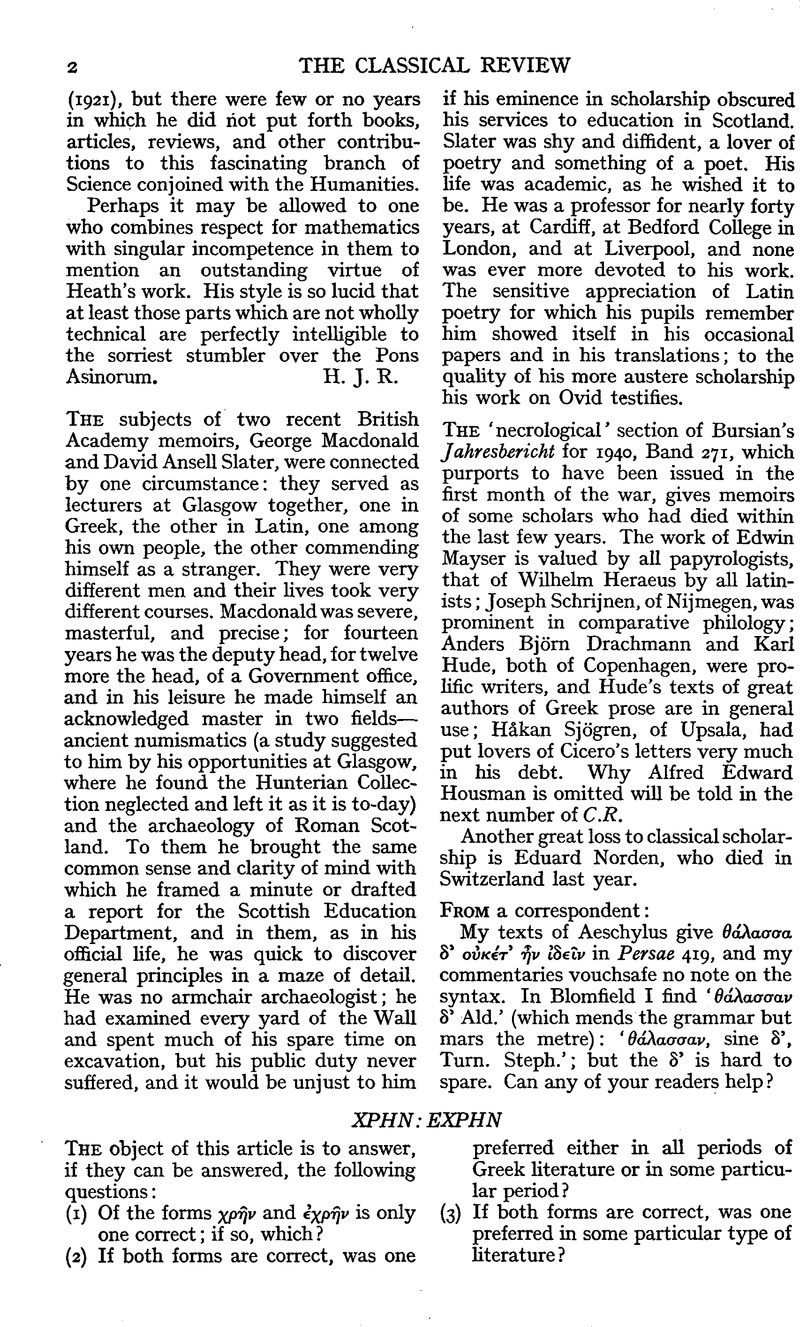No CrossRef data available.
Published online by Cambridge University Press: 27 October 2009

page 3 note 1 I am indebted to Mr. M. N. Tod for these facts.
page 3 note 1 Where lexica exist I have used them; where not, I have searched the text. Neither the human eye nor human attention is infallible. I can only hope that omissions, if any, are few.
page 3 note 2 ![]() .
.
page 3 note 3 I cite from the texts respectively of Murray and Pearson. For Eur. fragg. I use Nauck.
page 4 note 1 Where ![]() would be possible only by prodelision or crasis I regard
would be possible only by prodelision or crasis I regard ![]() as metrically guaranteed.
as metrically guaranteed.
page 4 note 2 Cf. Hense on Stob. iv, p. 728,1. It isnot clear whether Bergk meant a late Sophoclean play or a post-Sophoclean play. In any case Wilamowitz definitely regards itas post-Sophoclean (Hermes, lxiv. 465).
page 4 note 1 I purposely omit Eur. fr. 1109. 2 (![]() )as almost certainly spurious (cf. hypoth. to Rhesus, p. 2, 1. II (Murray)
)as almost certainly spurious (cf. hypoth. to Rhesus, p. 2, 1. II (Murray) ![]() ); also/r. 953. 1 (‘not Euripidean’: Wilamowitz in Hermes, xv. 491); also fr. adesp. 111. 2 (
); also/r. 953. 1 (‘not Euripidean’: Wilamowitz in Hermes, xv. 491); also fr. adesp. 111. 2 (![]() )—a fragment attributed to Eur. by Meineke (Jahrb.f. Philol. lxxxvii. 381), without, as it seems to me, any justification.
)—a fragment attributed to Eur. by Meineke (Jahrb.f. Philol. lxxxvii. 381), without, as it seems to me, any justification.
page 5 note 1 I say 8, not 7, as I have added Neophron, fr. 2. 7 (![]() ).
).
page 5 note 2 I cite from the Oxford text of Aristophanes, and from Kock, vol. i.